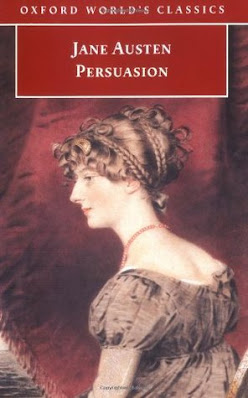Review: 'A Gallery of Poisoners' by Adrian Vincent
 I have been drowning myself in beautiful Magical Realism, Fantasy and Fairytales lately, but then found myself craving some fun and quick non-fiction, the kind of book that cleanses your palate a bit but also gives you something fun and scandalous. And I found that cleanser in A Gallery of Poisoners. Who doesn't want to while away the lazy hours of the day by reading about Victorian poisoners and their scandalous court cases? Thanks to Endeavour Press and Netgalley for providing me with a copy of this book in exchange for an honest review!
I have been drowning myself in beautiful Magical Realism, Fantasy and Fairytales lately, but then found myself craving some fun and quick non-fiction, the kind of book that cleanses your palate a bit but also gives you something fun and scandalous. And I found that cleanser in A Gallery of Poisoners. Who doesn't want to while away the lazy hours of the day by reading about Victorian poisoners and their scandalous court cases? Thanks to Endeavour Press and Netgalley for providing me with a copy of this book in exchange for an honest review!Pub. Date: 25/11/2016
Publisher: Endeavour Press
Here are thirteen cases of fatal passions, unfortunate acquaintances and gruesome endings.
Presenting infamous cases ranging from 1857 – 1972, Adrian Vincent revisits the lives of some of the most notorious killers ever to be brought to justice. What drives someone to specialise in devising agonising death for their victims?
Vincent reveals the lure of money, lust and deviancy as they manifest in pure evil — lurking beneath the surface of domestic bliss and professional respectability. Wives dispatching husbands for their cash.
Lovers killing for passion. The infamous Mary Ann Cotton, who poisoned three husbands and eleven of her children. Graham Young, who was fascinated by poisons from the age of twelve and given to administering lethal concoctions — just to see what would happen. Obsessive poisoners like Tillie Gburek, a middle-aged woman who found a taste for making deadly soups — and got through a series of husbands … There’s the voyeuristic ménage à trois where a husband enjoyed his wife taking a lover which had dire consequences … While the so-called Angel of Death, Nurse Waddington, ran her own nursing home.
Killers who specialised in devising agonising death for their victims. A Gallery of Poisoners is classic true crime at its best — thrilling and disturbing in equal measure.A Gallery of Poisoners was originally published in 1993 but was republished by Endeavour Press on November last year. I wonder whether it would have made a timely Christmas present... surely an ominous one. Poisoners have always held a certain fascination with people. Perhaps it is the subterfuge that usually goes along with it, the idea of the murderer calmly sitting opposite their victim as they drink the poisoned wine or eat the poisoned cake. In the thirteen cases described by Vincent in A Gallery of Poisoners we get exactly the images we want, the lover who has to be dispatched before he causes a scandal, the husband-killing wife, the husband who gets sick of his nagging wife. The list also includes both very well-known murder cases, such as Dr. Hawley Harvey Crippen, and more unknown yet equally fascinating ones. Just for these arguably over-the-top stories, A Gallery of Poisoners is a fun read, giving the reader exactly what they want. If these cases weren't historically true, they would be almost too cliche to be believable.
As the book's subtitle points out, A Gallery of Poisoners actually focuses on 'case histories of murder by poisoning'. Although this may seems like just a fancy way to say 'stories about poisoners', it actually reveals more about the content of the book than you may expect. Vincent doesn't just give dramatic, and potentially fictionalised, retellings of the lead up to and the actual poisonings, he also focuses on the trials afterwards. By doing so, he grounds his book in history and facts, thereby also giving himself the liberty to speculate here and there. Throughout reading the different cases it becomes fun to track different people, whether it was a junior counsel or the crown prosecutors, from one case to another, seeing them both succeed and fail at defending their clients, getting promoted or demoted, etc. (Most notable here is Edward Marshall Hall.) Also interesting is the way in which Vincent considers both gender and class in the novel, hopping between America and England to show the fates of victims, murderers and bystanders. He especially shows awareness of the circumstances of women in Victorian England, with their small means and curtailed opportunities. Although he never excuses any of the murderers, he is also not blind to external pressures which prevents A Gallery of Poisoners from becoming sensationalist.
Vincent's writing style is very direct and to the point. Often the cases start with who gets murdered, which means suspense is not exactly a big aspect of A Gallery of Poisoners. However, the way Vincent speculates as to motives and means is interesting, and he does it with an off-hand humour which often surprised me into laughter. Throughout A Gallery of Poisoners Vincent drops in his own two cents here and there, commenting on the tactics of the poisoners, their missteps, the courtroom antics of defendants or the general state of British law. While each case history is fascinating, I would not recommend trying to sit down and read all of them at once. Although possible, eventually a sense of repetition does set in. Vincent does his best, but it is more fun to read a story here and there.
I give this book...

3 Universes!
A Gallery of Poisoners is a quick and interesting read. It gives some fascinating insights into both murder cases of the past as well as the court cases that followed. Reading the book in one sitting may be a bit dull, but to dip in now and then and read a story or two is exactly the kind of fun you may need. I'd recommend this to fans of historical fiction and murder mysteries.



Comments
Post a Comment